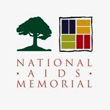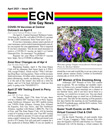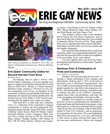AIDS Memorial Quilt Virtual Exhibition and Stories Raise Awareness About Rise in HIV Infection Rates in Certain Native Community Populations
SAN FRANCISCO (March 19, 2021) - March 20th is National Native HIV/AIDS Awareness Day (NNHAAD), a national mobilization effort designed to encourage American Indians, Alaska Natives and Native Hawaiians across the United States and Territorial Areas to increase their awareness, get tested, get involved in prevention efforts and be treated for HIV.
The National AIDS Memorial is honoring the lives lost in the Native community to AIDS with a special virtual exhibition of the AIDS Memorial Quilt, which features 16-Quilt blocks that contain panels made to honor loved ones from the American Indian, Alaska Native and the Native Hawaiian communities. The exhibition is also meant to raise greater awareness about the rising rates of HIV infection among certain age groups within the AI/AN/NH population.
"The Quilt is a powerful symbol of hope, healing and remembrance," said John Cunningham, Executive Director of the National AIDS Memorial. "It is also a teaching tool that connects the story of AIDS, finding a cure, and helping in important prevention, awareness and education efforts to tackle the growing rates of HIV infection in the U.S., particularly among communities of color."
According to the Indian Health Service, which analyzed HIV surveillance data reported to CDC by state and local health departments, from 2014 - 2018, there was an 8.2% increase in HIV diagnoses among non-Hispanic AI/AN populations between the ages of 13-24 years, and a 13.4% increase between the ages of 35-44 years age groups, with the latter having the highest percentage increase among all age groups. While the death rates from 2014-2018 decreased in these populations by 31.4%., the overall HIV diagnosis rate remained stable. During the same timeframe, HIV diagnoses increased 51% among the Native Hawaiian/Pacific Islander population.
"These statistics show that there remains a gap in reaching Native communities about the importance of awareness, education and prevention regarding HIV and our collective efforts to end this epidemic," said Rick Haverkate, National HIV Program Director for the Indian Health Service. "The Quilt is just one way that we can teach prevention through powerful stories that open hearts and minds."
Presenting partners of the virtual exhibition are Gilead Sciences and Vivent Health. Community Partners include the Indian Health Service, Kua`aina Associates, The National Native HIV Network, Northwest Portland Area Indian Health Board and Hawai`i Health & Harm Reduction Center. The American Folklife Center at the Library of Congress provided digitized Quilt archive materials featured in several of the displays.
Visitors can view the exhibition at www.aidsmemorial.org. It is featured as part of a 50-state virtual exhibition of the Quilt that was launched on World AIDS Day and features more than 10,000 Quilt panels.
The virtual exhibition and displays tell the story behind each panel and include letters, photos and news articles that share the struggles, the pain and celebration of life told through the eyes of those who died, and the survivors. Weaved throughout the displays, visitors will experience the beautiful cultural symbols sewn into the panels that are representative of the Native community. Some of the featured stories in the exhibition include:
- A panel with the name of Dennis Huckabee, made by his lover Alan. The panel was made from Dennis' black satin cape, and sewn into it are feathers that represent his birthplace, Oklahoma City, and his Cherokee heritage. Sewn into the panel is a special message of love, "We-2-R-1", symbolizing their four year relationship together. (Block 0792)
- A panel for Peta I gigi Chi wa I Wanka, fondly known as Peta by his friends, contains a letter submitted with the panel includes a poem Peta wrote before his death. His quilt panel shows a bird with personal items and feathers, reflecting Peta's Native American Lakota heritage, where it is believed that all things possess an inherent virtue, power, and wisdom. Two poems are also shown on the panel, one of which is "A Lakota Indian Way of Prayer." (Block 2764)
- A panel honors David Brian Warrior, a member of the Osage Nation of Indians, a tribe located in northern Oklahoma. The panel's design is inspired by blankets and other textiles traditional to the Osage people. (Block 4421)
- A panel honoring the life of Dwayne S. Norton, made by his parents. Sewn into the panel are powerful symbols of his Native American heritage. Centered on the panel is a sewn image of the End of the Trail Indian Warrior, which depicts a weary Native American man hanging limp on his weary horse, embodying suffering and exhaustion. (Block 4986)
- A collection of panels were made to honor loved ones from Hawai'i lost to AIDS. The panels show various floral appliqué unique to Hawaiian quilt patterns inspired by the natural beauty of the islands. Each panel provided tells a beautiful story of aloha and remembrance. A letter accompanies the panel for Robert Mitchell, that shares his love of the ukulele and native flowers. (Block 1416)
- A panel created for White Eagle Moore, who was a member of the Rosbud Sioux or Sicangu Lakota tribe, and an internationally acclaimed operatic tenor. This quilt panel was made by a registered nurse who cared for him. He wrote that the panel contains a star quilt in the center, explaining that the star quilt is a traditional art form of the Lakota and given as an honor gift. The song on the panel is the memorial song, in English and Lakota, that was sung at his funeral service. (Block 4308)
- A panel honors Marty Lynn Prairie, a long-term survivor of HIV/AIDS. His life work was dedicated to HIV prevention, and in 1994, Marty began a syringe and needle exchange program in Asheville, North Carolina. He was a fierce advocate for people living with HIV/AIDS, the homeless, drug users, gay men of color and American Indians. Marty was Oglala Lakota Sioux from the Pine Ridge Reservation and a descendant of "Chief Big Foot" of the Hunkpapa Nation. (Block 5763)
Additional Native Community HIV/AIDS Resources can be found here: IHS HIV/AIDS, NNAAAD, We R Native, Project Red Talon, Healthy Native Youth, Kua`ana Project, Bay Area American Indian 2-Spirits, Montana 2 Spirit Society.
Learn more about the National AIDS Memorial at www.aidsmemorial.org.





